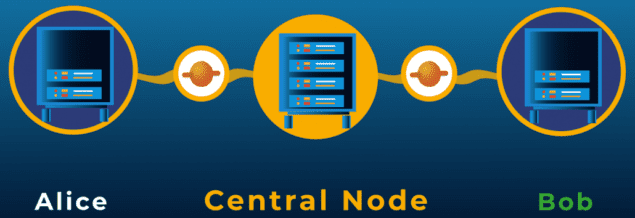
If you’ve ever attended the premiere of a film or an event where a new type of car is presented, you’ll know that there’s a slight buzz of excitement that comes from not knowing what to expect. I’ve been feeling that buzz for the past two weeks, leading up to an event that promised a “world premiere live demonstration of the next step in quantum cryptography”. It was not that the whole event was clouded in mystery, as some small teasers were released leading up to it. Still, with all the recent developments on the quantum Internet, I was left wondering: what exactly is the “state of the art” they plan to demonstrate?
The event, which took place on Tuesday this week, was organized by a group of institutes and companies involved in quantum cryptography in the Netherlands. Amongst them were QuTech, a collaboration of the Delft University of Technology and the Dutch Institute of Applied Scientific Research (TNO). Another was Quantum Delta NL, a Dutch umbrella organization for all things quantum that recently became a subsidiary of a €615m government investment to advance quantum technology in the Netherlands. The Dutch telecoms firm KPN and the Internet hardware provider Cisco were involved, too.
So what happened at the event? The demonstration aimed to show how three quantum network points (nodes) can be connected via an optical fibre network, using one node as the central point. Due to the quantum nature of the connection, if anybody tried to spy on the communication, this would immediately be noticed. But while it’s exciting to have a functional quantum network like this, similar things have already been demonstrated in other labs around the world.
The part where it gets impressive is that the nodes were stand-alone devices. As part of the demonstration, two nodes were literally put in a van and driven to two neighbouring cities approximately 25 kilometres apart. The three nodes were then connected via the existing optical fibre network. To show that the system worked, the demonstrators generated a quantum key, used it to encrypt a video at one end of the network, sent the video over the network and then decrypted and watched it at the other end.
The network still lacks some crucial building blocks needed to make it scalable, such as quantum repeaters. Even so, we could already see a super-secure Internet in action.

New quantum repeaters could enable a scalable quantum internet
From a science communication point of view, the demonstration was very nice to watch, with a good mix of animations and discussion panels, topped up with the live demonstrations (as you can see for yourself in the recording). This made it understandable and appealing to a varied audience. I also liked the way that academic research and industry really came together. It was different from demonstrations I’ve seen before about scientific advancements that still require a decade before they might become reality. Here, interested users could already come forward to help improve the technology from a user perspective. It shows the push to get this technology out of the lab and into our daily lives.
So, is the quantum future here already? No, not yet. But I did get a glimpse of what it looks like. And as a quantum enthusiast, I have to say I like what I saw.



